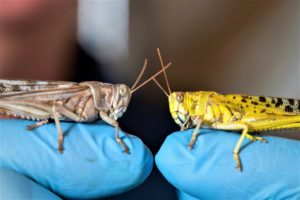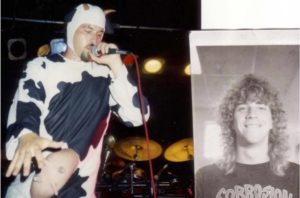
So rewarding to see Darron Cullen’s study of density-dependent color change in adult desert locusts finally get published – in PNAS nonetheless!
The project originated at the University of Sydney over a decade ago when Darron was a PhD student co-advised by Steve Simpson and Greg. The idea of manipulating locust coloration and using the altered insects in mate choice experiments came about after Darron successfully silenced the yellow protein gene in male Locusta migratoria using RNAi. Since then, he’s kept the dream alive in multiple labs around the world and shifted over to the desert locust (Schistocerca gregaria) as a model system. As if seeing your students succeed isn’t enough, this study is particularly satisfying because it expands the work I did a couple decades ago (damn, I’m old!) on density-dependent warning coloration in juvenile locusts to adults. Interestingly, the same gene is involved in density-dependent color change, but the ecological function of its expression varies. The color patterns expressed by crowded juvenile locusts function as an interspecific warning signal advertising unprofitability to predators, but later in adult male locusts, becoming bright yellow when crowded acts as an intraspecific warning signal to other males in crowded swarms to help avoid mate choice mistakes and reduce male-male competition. Working with my old friend, Gil Rosenthal, to make sure we got the sexual selection aspects correct was a super special bonus!
Here’s a link to the PNAS open access article: Sexual repurposing of juvenile aposematism in locusts
And a couple of the press releases so far:
Century-old Locust Mystery Uncovered by New Research
Study identifies sex-adapted color-change gene in locusts (also source of the photo above)
An excellent non-technical summary on Kudos.

